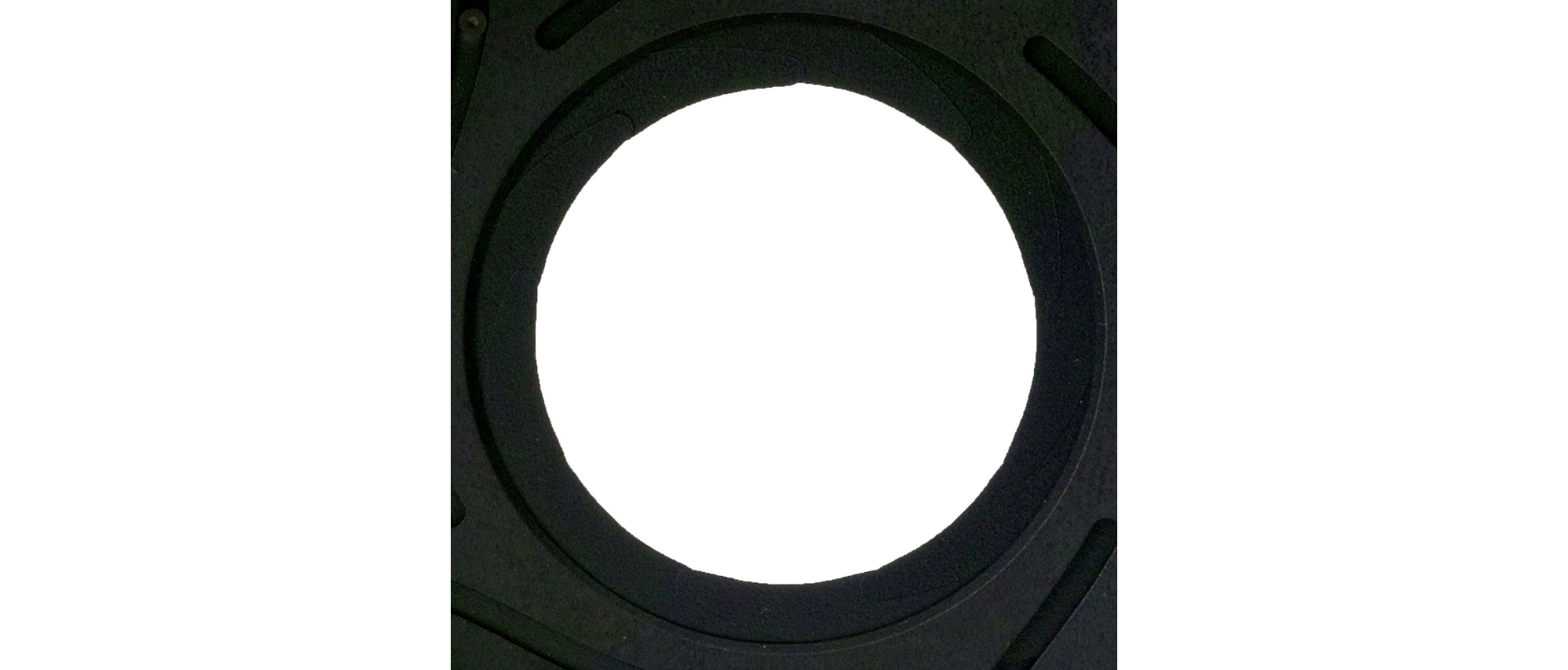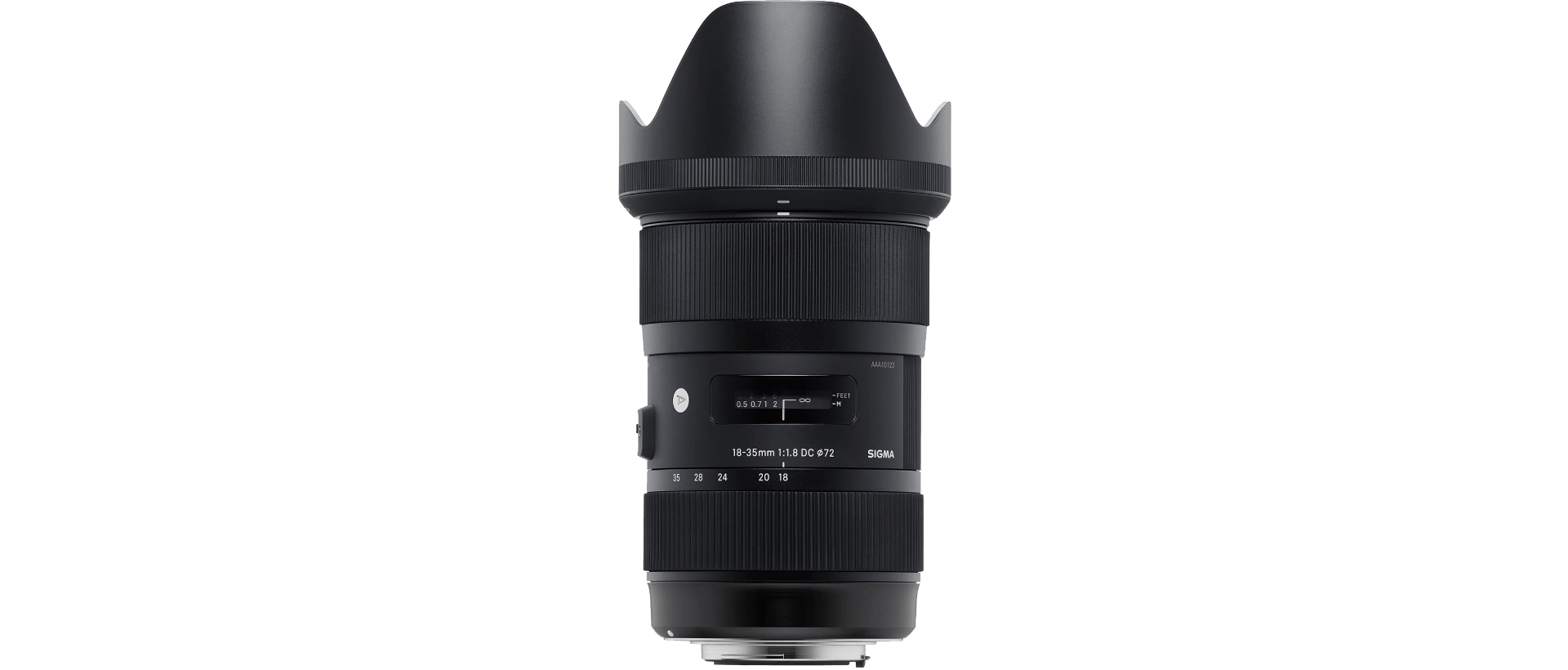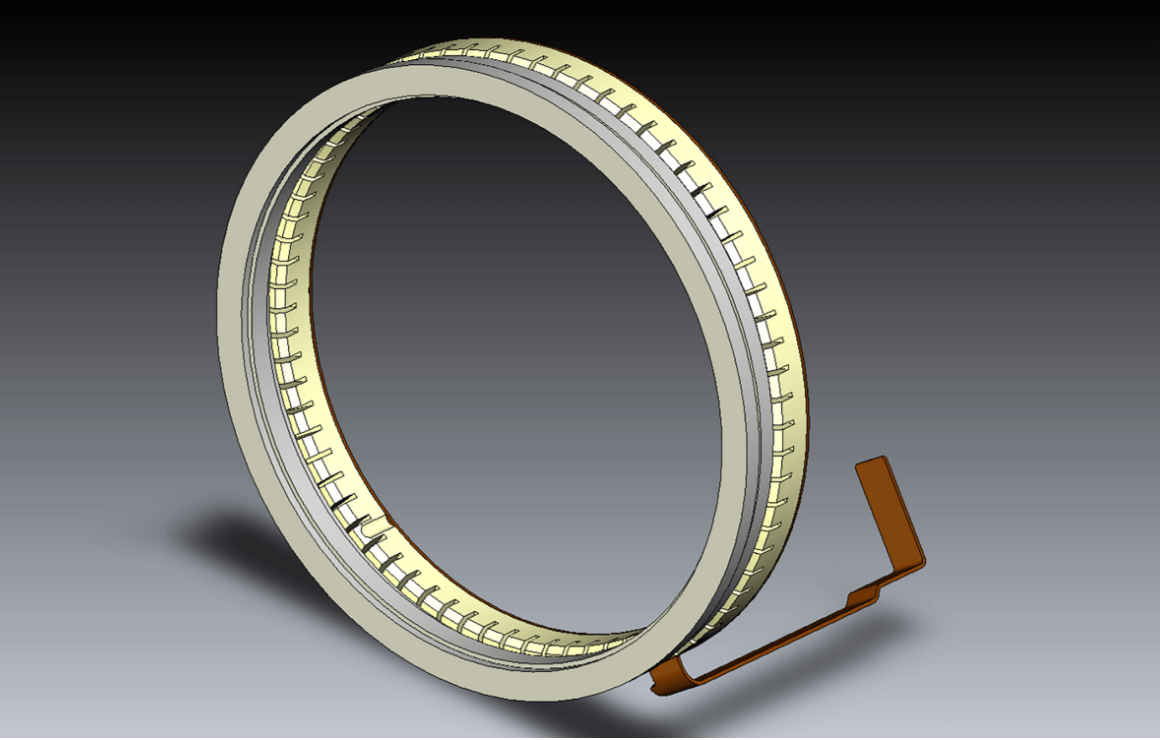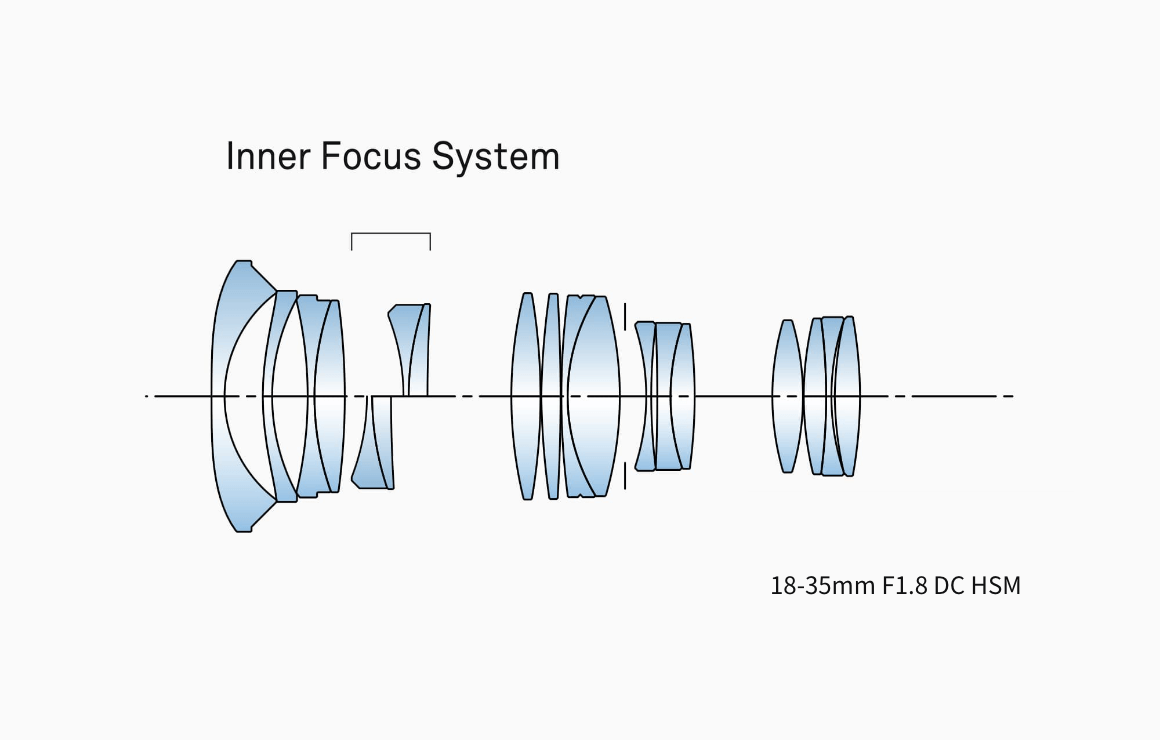SIGMA 18-35mm F1.8 DC HSM | Art

• 's Werelds eerste standaardzoomlens met F1.8 over het hele zoombereik
• Zeer geschikt voor videoproductie
• Unieke snelle (aps-c) zoomlens met constant diafragma
• Voor- en achterlensdoppen en zonnekap zijn bij de lens inbegrepen
• Verkrijgbaar met Canon EF-vatting, Nikon F-vatting, SIGMA SA-vatting en Pentax K-vatting
This lens features the Latest Sigma technologies to offer F1.8 throughout the zoom range and ultimate performance
Exemplifying Sigma’s design know-how and advanced production technologies, this innovative lens offers the highest level of craftsmanship.
To develop a large aperture zoom lens with a maximum aperture of F1.8, it was necessary to solve a variety of technical challenges. As the f-number decreases, so does the depth of focus, making it extremely difficult to minimize spherical aberration, axial chromatic aberration, astigmatism and field curvature. To minimize astigmatism across the zoom range, Sigma leveraged its extensive experience in reducing optical aberrations and designing advanced structural elements. Sigma gained this know-how when it developed such super wide angle zoom lenses as the Sigma12-24mm F4.5-5.6 II DG HSM and Sigma 8-16mm F4.5-5.6 DC HSM. Ongoing technological innovation at Sigma’s Aizu Factory has also contributed to further enhancements in lens production. Advanced production technologies have made possible a large-diameter molded glass aspheric lens, which teams up with SLD (Special Low Dispersion) glass elements to optimize power distribution and minimize axial chromatic and spherical aberration and field curvature. Thanks to its hard-earned knowledge of lens design and advanced lens manufacturing techniques, Sigma has succeeded in creating a lens that offers F1.8 throughout the zoom range, as well as exceptional image quality at wide open aperture.
Rounded diaphragm
When photographing with point light sources such as electric lights or reflections on a body of water in the background, the rounded 9-blade diaphragm helps produce an attractive bokeh effect—even at large-aperture settings.


Advanced flexibility and convenience expand photographic freedom
Covering the angles of view offered by multiple large-aperture, fixed focal length lenses, this lens combines advanced flexibility with uncompromising performance.
Zoom lenses are extremely convenient, providing a wide range of angles of view with just a twist of the zoom ring. The downside, however, is that F2.8 has been the limit of zoom lens brightness, forcing photographers to select fixed focal length lenses for brighter f-numbers. Although fixed focal lenses have been superior to zoom lenses in terms of f-number brightness and overall performance, they offer only a fixed angle of view, requiring photographers to carry several with them and change lenses as necessary. The 18-35mm F1.8 DC HSM next-generation large-aperture standard zoom lens is the world’s first* to deliver F1.8 brightness throughout the zoom range. Its bright viewfinder makes it easy to confirm focus and compose perfect shots. As compared to a F2.8 lens in the same photographic conditions, it allows the photographer to use a shutter speed that is one stop faster, reducing the influence of camera shake. In addition, the shallower depth of field makes possible a beautiful bokeh effect in the background, expanding photographic creativity. From wide open to standard apertures, this lens is highly flexible, covering the angles of view offered by multiple large-aperture, fixed focal length lenses.
* For interchangeable lenses for digital SLR cameras (as of April 2013)


The finest in materials, usability and functionality
A refined, integrated design made with the photographer in mind.
All lenses in Sigma’s new Art line come with a hood with a high-quality rubberized connector and feature a newly designed lens cap and AF/MF switch, and are designed for intuitive use and superior functionality. Inside, HSM (Hyper Sonic Motor) delivers high AF speed and extremely quiet performance. An enhanced algorithm offers even smoother automatic focusing. Full-time manual focus override is another key feature that leaves the artistic touches in the photographer’s hands. The brass mount combines high precision with rugged construction. Its treated surfaces and enhanced strength contribute to the exceptional durability of the lens. In both the external and internal parts, the optimized use of
(*)TSC (Thermally Stable Composite), an excellent match for metal parts, further contributes to the high-precision construction of the lens.
(*)TSC (Thermally Stable Composite)
TSC (Thermally Stable Composite) is a type of polycarbonate with a thermal expansion rate similar to that of aluminum. It has high affinity to metal parts which contributes to high quality product manufacturing.


HSM (Hyper Sonic Motor)
HSM (Hyper Sonic Motor) delivers high AF speed and extremely quiet performance. An optimized algorithm offers even smoother automatic focusing, and full-time manual focus override is another key feature.


Incorporating an Inner Focus system
The lens incorporates a rear focus system that prevents focus-dependent variation in aberration, making high-level image quality possible throughout the entire image. With their unchanging barrel length, these lenses also enhance balance and stability for the photographer. Furthermore, since the front of the lens does not rotate, polarizing filters can be used with extra convenience.


TSC (Thermally Stable Composite)
A first for the industry, the barrel of the lens features a new
(*)TSC (Thermally Stable Composite) that offers minimal thermal shrinkage combined with exceptional hardness. It also offers 25% greater elasticity than polycarbonate. Since its thermal shrinkage is low, TSC matches well with metal parts, further contributing to the high-precision construction of the lens. TSC also makes possible slimmer forms for parts like zoom rings and scaling rings.
(*)TSC (Thermally Stable Composite)
TSC (Thermally Stable Composite) is a type of polycarbonate with a thermal expansion rate similar to that of aluminum. It has high affinity to metal parts which contributes to high quality product manufacturing.
Flare and ghosting reduction
From an early stage in the lens design process, flare and ghosting have been measured to establish an optical design resistant to strong incident light sources such as backlighting. Sigma’s Super Multi-Layer Coating reduces flare and ghosting to help photographers produce sharp and high contrast images even in backlit conditions. The included lens hood can be attached to block out extraneous light, which can have a negative effect on rendering performance.


High-precision, rugged brass bayonet mount
The brass mount combines high precision with rugged construction. Its treated surfaces and enhanced strength contribute to the exceptional durability of the lens.


| Productlijn | Art | |
|---|---|---|
| Youtube Videos | ||
| Instagram Widget | ||
| Klevu Image | /a/0/a013_18_35_18_basic_01.png | |
| Lensconstructie | 17 Elements in 12 Groups | |
| Lens Type | Wide Angle | |
| Sensor Size | APS-C | |
| Beeldhoek | 76.5º - 44.2º | |
| Aantal diafragmalamellen | 9 (Rounded Diaphragm) | |
| Minimaal diafragma | F16 | |
| Minimale scherpstelafstand | 28 cm | |
| Maximale vergroting | 1:4.3 | |
| Afmetingen (diameter x lengte) | ||
| Gewicht (gram) | 810 g | |
| Filtermaat | 72mm | |
| Accessoires | Lens hood (LH780-06) supplied. | |
| EAN-code | Sigma SA 085126210564 |
|
This lens features the Latest Sigma technologies to offer F1.8 throughout the zoom range and ultimate performance
Exemplifying Sigma’s design know-how and advanced production technologies, this innovative lens offers the highest level of craftsmanship.
To develop a large aperture zoom lens with a maximum aperture of F1.8, it was necessary to solve a variety of technical challenges. As the f-number decreases, so does the depth of focus, making it extremely difficult to minimize spherical aberration, axial chromatic aberration, astigmatism and field curvature. To minimize astigmatism across the zoom range, Sigma leveraged its extensive experience in reducing optical aberrations and designing advanced structural elements. Sigma gained this know-how when it developed such super wide angle zoom lenses as the Sigma12-24mm F4.5-5.6 II DG HSM and Sigma 8-16mm F4.5-5.6 DC HSM. Ongoing technological innovation at Sigma’s Aizu Factory has also contributed to further enhancements in lens production. Advanced production technologies have made possible a large-diameter molded glass aspheric lens, which teams up with SLD (Special Low Dispersion) glass elements to optimize power distribution and minimize axial chromatic and spherical aberration and field curvature. Thanks to its hard-earned knowledge of lens design and advanced lens manufacturing techniques, Sigma has succeeded in creating a lens that offers F1.8 throughout the zoom range, as well as exceptional image quality at wide open aperture.
Rounded diaphragm
When photographing with point light sources such as electric lights or reflections on a body of water in the background, the rounded 9-blade diaphragm helps produce an attractive bokeh effect—even at large-aperture settings.


Advanced flexibility and convenience expand photographic freedom
Covering the angles of view offered by multiple large-aperture, fixed focal length lenses, this lens combines advanced flexibility with uncompromising performance.
Zoom lenses are extremely convenient, providing a wide range of angles of view with just a twist of the zoom ring. The downside, however, is that F2.8 has been the limit of zoom lens brightness, forcing photographers to select fixed focal length lenses for brighter f-numbers. Although fixed focal lenses have been superior to zoom lenses in terms of f-number brightness and overall performance, they offer only a fixed angle of view, requiring photographers to carry several with them and change lenses as necessary. The 18-35mm F1.8 DC HSM next-generation large-aperture standard zoom lens is the world’s first* to deliver F1.8 brightness throughout the zoom range. Its bright viewfinder makes it easy to confirm focus and compose perfect shots. As compared to a F2.8 lens in the same photographic conditions, it allows the photographer to use a shutter speed that is one stop faster, reducing the influence of camera shake. In addition, the shallower depth of field makes possible a beautiful bokeh effect in the background, expanding photographic creativity. From wide open to standard apertures, this lens is highly flexible, covering the angles of view offered by multiple large-aperture, fixed focal length lenses.
* For interchangeable lenses for digital SLR cameras (as of April 2013)


The finest in materials, usability and functionality
A refined, integrated design made with the photographer in mind.
All lenses in Sigma’s new Art line come with a hood with a high-quality rubberized connector and feature a newly designed lens cap and AF/MF switch, and are designed for intuitive use and superior functionality. Inside, HSM (Hyper Sonic Motor) delivers high AF speed and extremely quiet performance. An enhanced algorithm offers even smoother automatic focusing. Full-time manual focus override is another key feature that leaves the artistic touches in the photographer’s hands. The brass mount combines high precision with rugged construction. Its treated surfaces and enhanced strength contribute to the exceptional durability of the lens. In both the external and internal parts, the optimized use of
(*)TSC (Thermally Stable Composite), an excellent match for metal parts, further contributes to the high-precision construction of the lens.
(*)TSC (Thermally Stable Composite)
TSC (Thermally Stable Composite) is a type of polycarbonate with a thermal expansion rate similar to that of aluminum. It has high affinity to metal parts which contributes to high quality product manufacturing.


HSM (Hyper Sonic Motor)
HSM (Hyper Sonic Motor) delivers high AF speed and extremely quiet performance. An optimized algorithm offers even smoother automatic focusing, and full-time manual focus override is another key feature.


Incorporating an Inner Focus system
The lens incorporates a rear focus system that prevents focus-dependent variation in aberration, making high-level image quality possible throughout the entire image. With their unchanging barrel length, these lenses also enhance balance and stability for the photographer. Furthermore, since the front of the lens does not rotate, polarizing filters can be used with extra convenience.


TSC (Thermally Stable Composite)
A first for the industry, the barrel of the lens features a new
(*)TSC (Thermally Stable Composite) that offers minimal thermal shrinkage combined with exceptional hardness. It also offers 25% greater elasticity than polycarbonate. Since its thermal shrinkage is low, TSC matches well with metal parts, further contributing to the high-precision construction of the lens. TSC also makes possible slimmer forms for parts like zoom rings and scaling rings.
(*)TSC (Thermally Stable Composite)
TSC (Thermally Stable Composite) is a type of polycarbonate with a thermal expansion rate similar to that of aluminum. It has high affinity to metal parts which contributes to high quality product manufacturing.
Flare and ghosting reduction
From an early stage in the lens design process, flare and ghosting have been measured to establish an optical design resistant to strong incident light sources such as backlighting. Sigma’s Super Multi-Layer Coating reduces flare and ghosting to help photographers produce sharp and high contrast images even in backlit conditions. The included lens hood can be attached to block out extraneous light, which can have a negative effect on rendering performance.


High-precision, rugged brass bayonet mount
The brass mount combines high precision with rugged construction. Its treated surfaces and enhanced strength contribute to the exceptional durability of the lens.


Lens Construction
MTF Chart
High-precision, rugged brass bayonet mount
The brass mount combines high precision with rugged construction. Its treated surfaces and enhanced strength contribute to the exceptional durability of the lens.
Inner Zoom
The lens incorporates an inner zoom. With their unchanging barrel length, these lenses also enhance balance and stability for the photographer. Furthermore, since the front of the lens does not rotate, polarizing filters can be used with extra convenience.
HSM (Hyper Sonic Motor)
The Hyper Sonic Motor (HSM) is an original Sigma development that uses ultrasonic waves to drive the autofocus mechanism. Its extremely quiet operation helps avoid disturbing photographic subjects. High torque and speed assure rapid autofocus response. Sigma uses two types of HSM: ring HSM and micro HSM. The Ring HSM configuration permits manual fine tuning of focus (manual override) by turning the focusing ring after autofocus is complete.
Rounded diaphragm
The polygonal shape of a conventional iris dia phragm causes out-of-focus light points to appear polygonal. A rounded diaphragm is designed to pro duce rounded out-of-focus light points when opened to near maximum aperture. This creates attractive bokeh effects in many situations, such as when pho tographing a subject against an out-of-focus surface of water from which light is being reflected.
Exclusive low-dispersion glass
The degree to which light is refracted by glass depends on the light's wavelength. This fact causes different colors of light to focus at slightly different points. The result is chromatic aberration, the color fringing that is particularly noticeable in telephoto lenses. Most chromatic aberration can be removed by combining a high-refractivity convex lens element with a low-refractivity concave element. Yet residual chromatic aberration known as "secondary spectrum" may still remain. To minimize this secondary spectrum, which can be a serious issue with conventional lenses, Sigma lenses feature up to three types of exclusive low-dispersion glass offering superior performance: ELD (Extraordinary Low Dispersion), SLD (Special Low Dispersion) and FLD ("F" Low Dispersion). In particular, FLD glass offers ultra-low dispersion in combination with high transmittance and the anomalous dispersion characteristics of fluorite. Meticulous deployment of these types of exclusive low-dispersion glass and optimization of power distribution gives Sigma lenses superlative image rendition undiminished by residual chromatic aberration.
